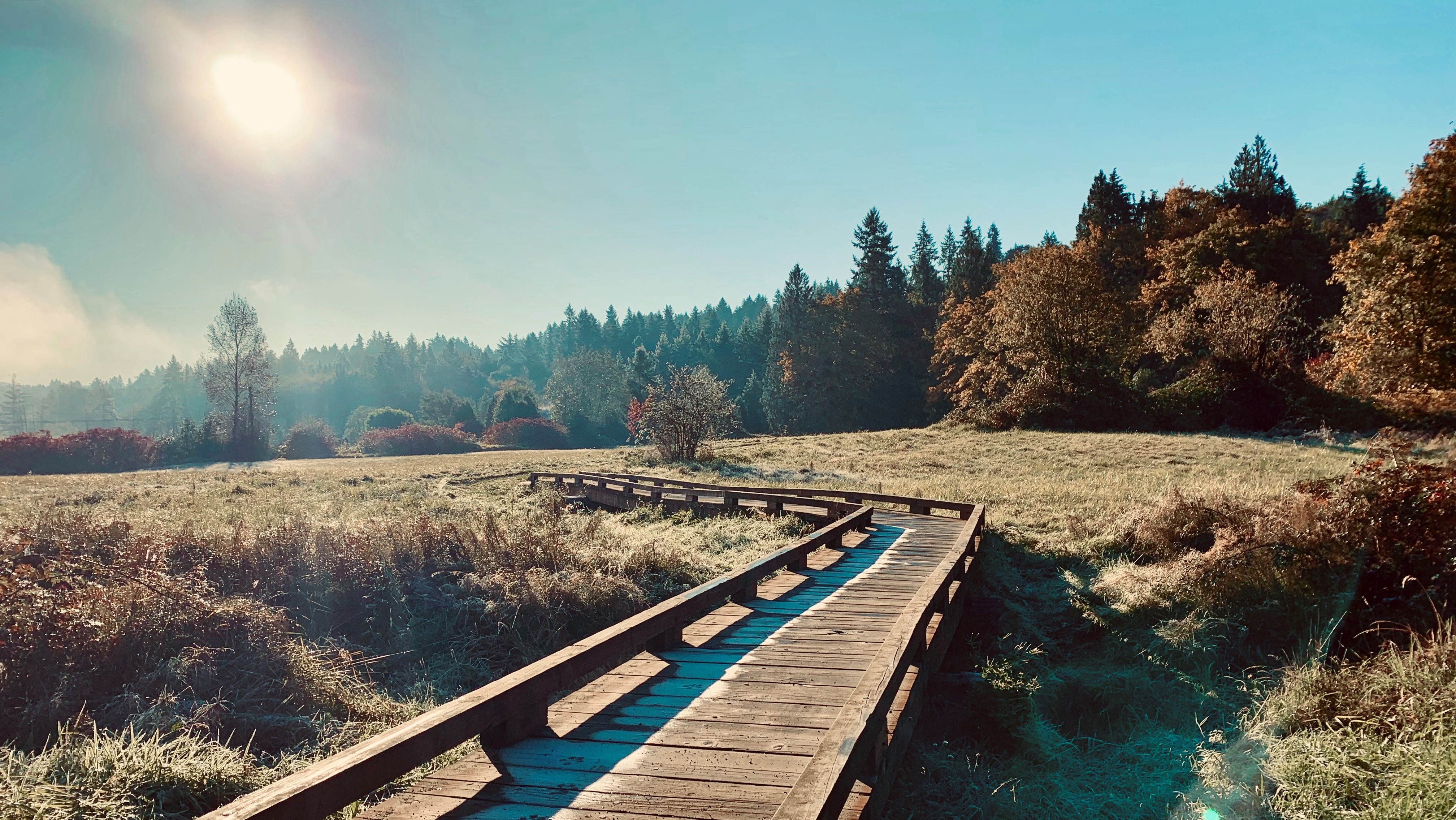Beaver Lake Water Lily Removal
Frequently Asked Questions
Lily pads are also known as “fragrant water lilies” or “Nymphaea odorata.” Their legal status in King County is Class C noxious weed. They are non-native species that can be designated for control based on local priorities (RCW 17.10). The King County Control Weed Board recommends control of this species.
They are native to the Eastern half of the U.S. and were introduced as an ornament in many parts of Western Washington. Left unmanaged, they can restrict lakefront access and hinder recreation. Drownings in King County have been attributed to lily pads (entanglements in dense stems). Stagnant mats create mosquito-breeding areas and increase water temperatures by absorbing sunlight. They also contribute to algal growth and water quality problems. They directly impact our native fish by increasing the water temperature and lowering dissolved oxygen, and the reduced plant biodiversity throws the food web out of balance.
Manual
Hand pulling can be successful for a small area if repeated regularly; however, this method is impractical for large infestations. When using this method, one must get the entire rhizome. Also, one must remove all pulled/cut plant pieces from the water. It can be composted on land or placed in a yard waste bin.
Another option is a carbohydrate depletion technique in which all emerging leaves are consistently removed. Typically it takes two to three growing seasons to kill the plants.
All manual control methods that disturb lake bottoms, wetlands, or streambeds require, at a minimum, a Hydraulic Project Approval (HPA) pamphlet permit from the Washington Department of Fish and Wildlife. Hand pulling of lily pads is not a realistic approach for large areas of infestation.
Mechanical
An opaque bottom barrier can suppress growth in small areas such as a boat launch or around a swimming area. Underwater rototilling of the rhizomes using a backhoe mounted to a barge and cutting and harvesting using boat-mounted cutters are options for large-scale removal and control.
These methods require approval from the Washington Department of Fish and Wildlife. Underwater rototilling and cutting and harvesting using boat-mounted cutters methods were thoroughly investigated for Beaver Lake and were deemed unsuitable. This is due to the detrimental effect of such methods on water turbidity and quality, lack of boat access to most of the shallow areas of the lake (essentially all the littoral of Beaver Lake 2 and all of Beaver Lake 1 and 3) and the prohibitive cost of this approach.
Chemical
Herbicides may be the most effective, cost-effective option for eradicating large infestations. Professional, licensed contractors are required for this method. In Washington State, specially formulated aquatic herbicides are only available for purchase to licensed applicators. Applying herbicides to water requires a permit from the Washington Department of Ecology.
For additional information about controlling the fragrant water lily, refer to this fact sheet.
An aquatic formulation of imazamox will be used in 2020. The environmental impact statement for imazamox is available from the Department of Ecology.
The need for treatment is assessed at least every other year by the Beaver Lake Management District Advisory Board.
The decision to treat Beaver Lake is informed by experts in freshwater lake treatment and is ultimately made by the Advisory Board of the Beaver Lake Management District. More info about the Beaver Lake Management District Advisory Board's mission and activities is available on the city website.
Properties on Beaver Lake and properties that drain to Beaver Lake are billed every year on their property tax for the Beaver Lake Management District, known as a special assessment. The fee also pays for monitoring, outreach and education, and administration of the Beaver Lake Management District.
The length of time an herbicide stays in the water depends on the type of chemical used. In the past, Beaver Lake was treated with glyphosate. For 2020, imazamox will be used. Water treated with imazamox may be used immediately following application for fishing, swimming, cooking, bathing, and watering livestock (see fact sheet here).
The Beaver Lake Community Club (BLCC) hired a licensed applicator to treat the lake starting in 2016. There were a large number of lilies in the lake, so that treatment was the first step in a multi-year effort to control the lily pads. Not all of the lily pads are treated at the same time because if we treated all of the weeds at once, we could cause mud mats to form. Mud mats are beds of mud where the roots have died and then float to the surface. The need for more treatment is considered after each treatment cycle is done.
Treatment is regulated under general permit by Department of Ecology. Information about the general permit: ecology.wa.gov/AquaticPlants
The environmental impact statement for imazamox is available from the Department of Ecology.
Update to Department of Ecology General Permit to Help Remove Noxious Weeds
King County web page on Fragrant Water Lily
King County fact sheet for best practices managing Fragrant Water Lily
Chris Knutson
Water Quality Planner/Project Manager II
King County Water and Land Resources Division
201 S. Jackson St, Suite 600
Seattle, WA 98104-3855
chris.knutson@kingcounty.gov
206-477-4739 (office)
Yes. Sammamish Municipal Code, 12.05.010 Boating Regulations, has adopted King County Code 12.44.240 Beaver Lake restrictions which read, "It is unlawful to use or operate any internal combustion engines on Beaver Lake; provided, that nothing in this section shall be construed to prevent any public official or construction company from performing authorized duties. (Ord. 1110 § 1, 1972)." Treatment application is authorized to be performed using a motorized boat.
Get educated! Learn how to identify and control fragrant water lilies and other invasive weeds. Read the educational materials such as Water Weeds: Guide to Aquatic Weeds in King County provided by King County or use the online Aquatic Plant Identification Manual for Washington's Freshwater Plants hosted by the state of Washington Department of Ecology.
Get involved! Follow the activities of the Beaver Lake Management District Advisory Board. Consider joining the King County Lake Weed Watcher program.
